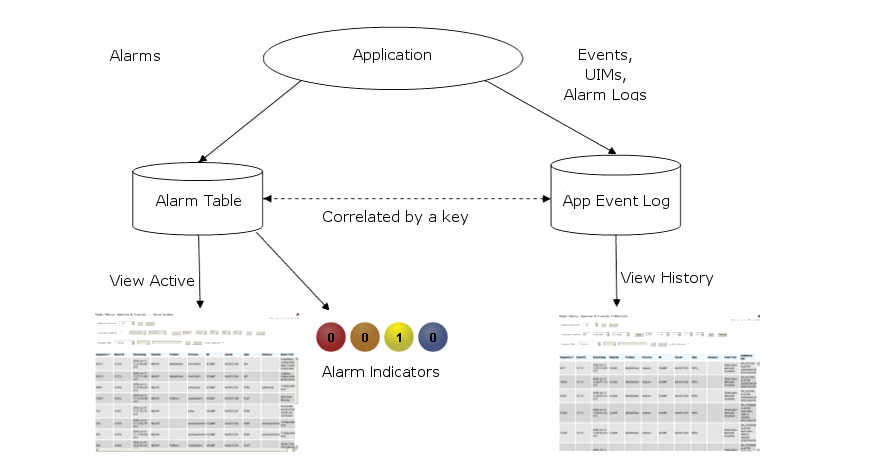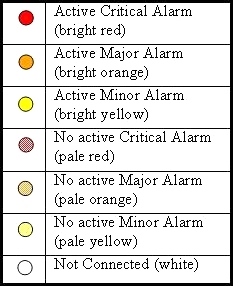| Tekelec Platform Operations, Administration, and Maintenance (OAM) Release 7.5 E88997 |
|
 Previous |
 Next |
| Tekelec Platform Operations, Administration, and Maintenance (OAM) Release 7.5 E88997 |
|
 Previous |
 Next |
Events note the occurrence of an expected condition, such as an unsuccessful login attempt by a user. Events have a severity of Info and are logged on the View History page.
Figure 5-1 shows how alarms and events are organized in the application.
Figure 5-1 Flow of Alarms

Alarm indicators, located in the User Interface banner, indicate all critical, major, and minor active alarms. A number and an alarm indicator combined represent the number of active alarms at a specific level of severity. For example, if you see the number six in the orange-colored alarm indicator, that means there are six major active alarms. This is shown in Figure 5-2 and Figure 5-3.
Figure 5-2 Alarm Indicators Legend

Figure 5-3 Trap Count Indicator Legend
